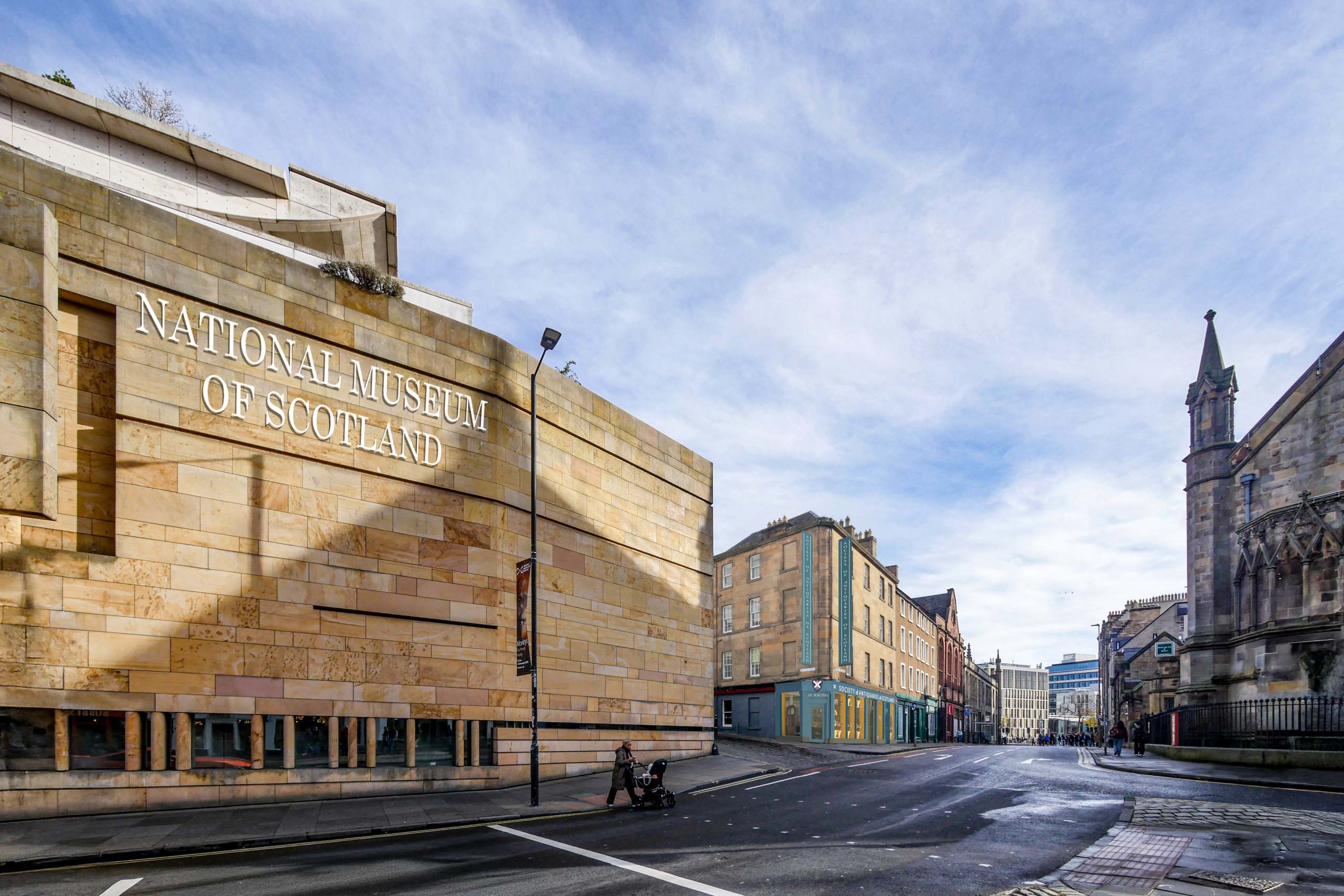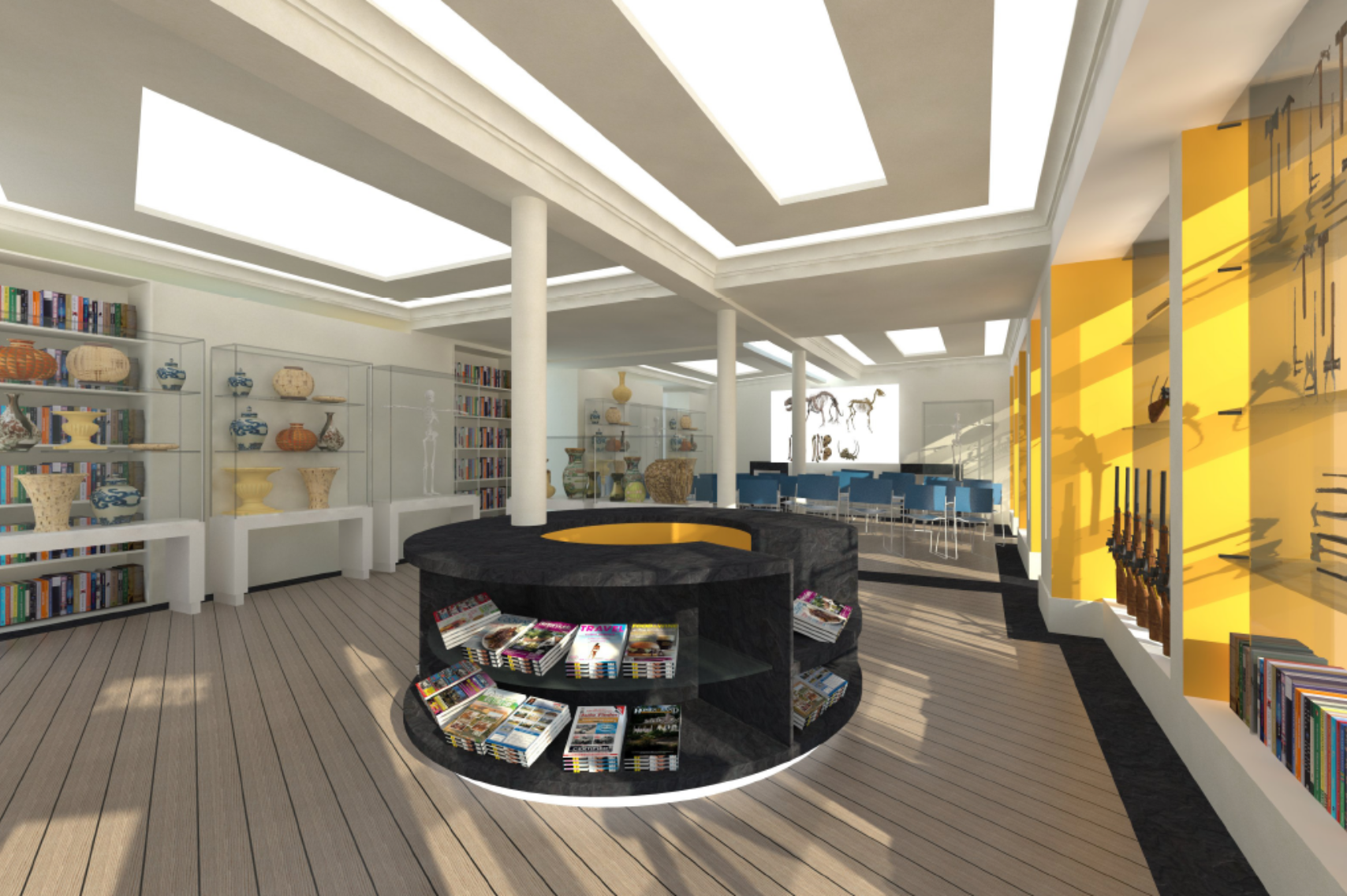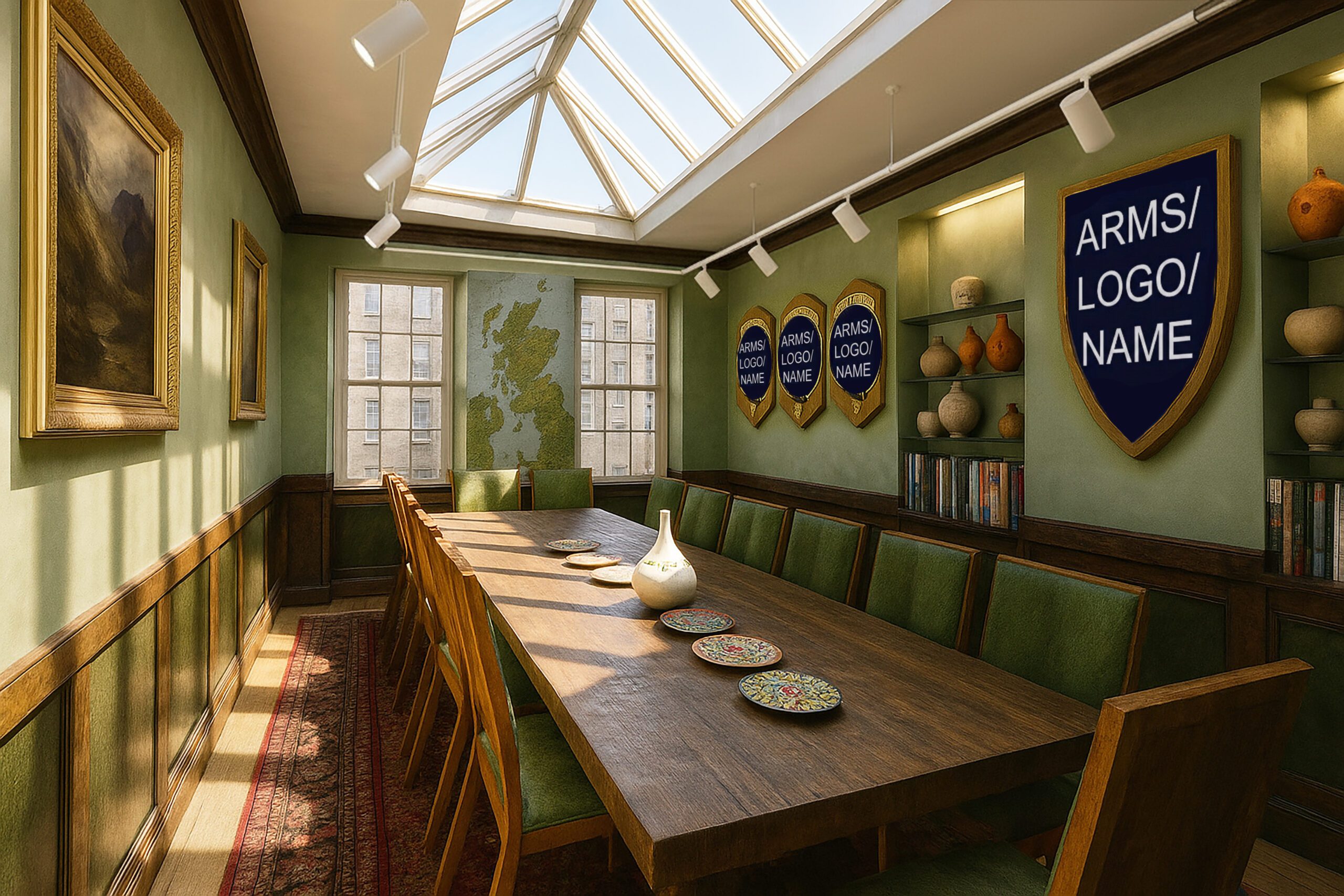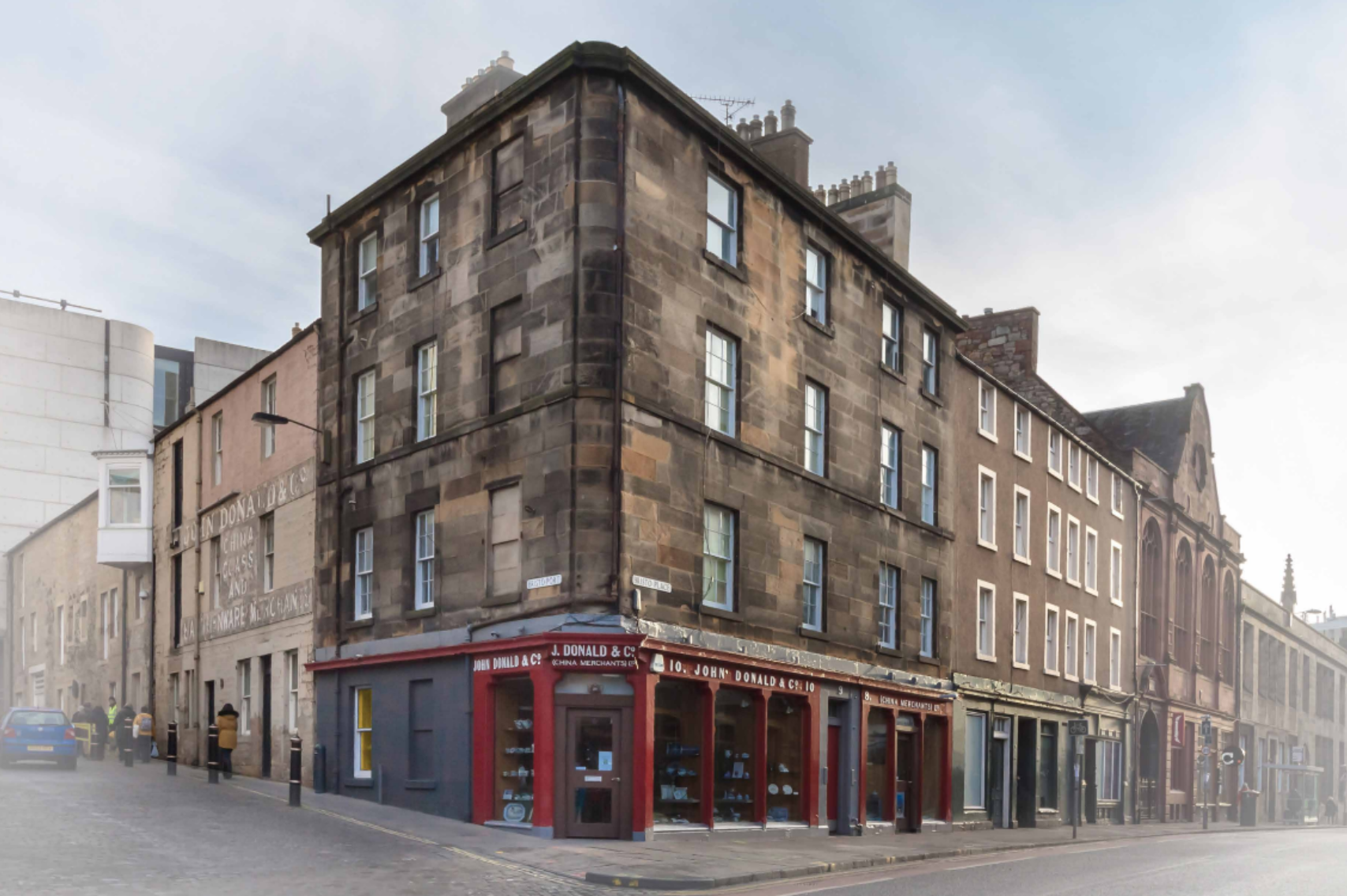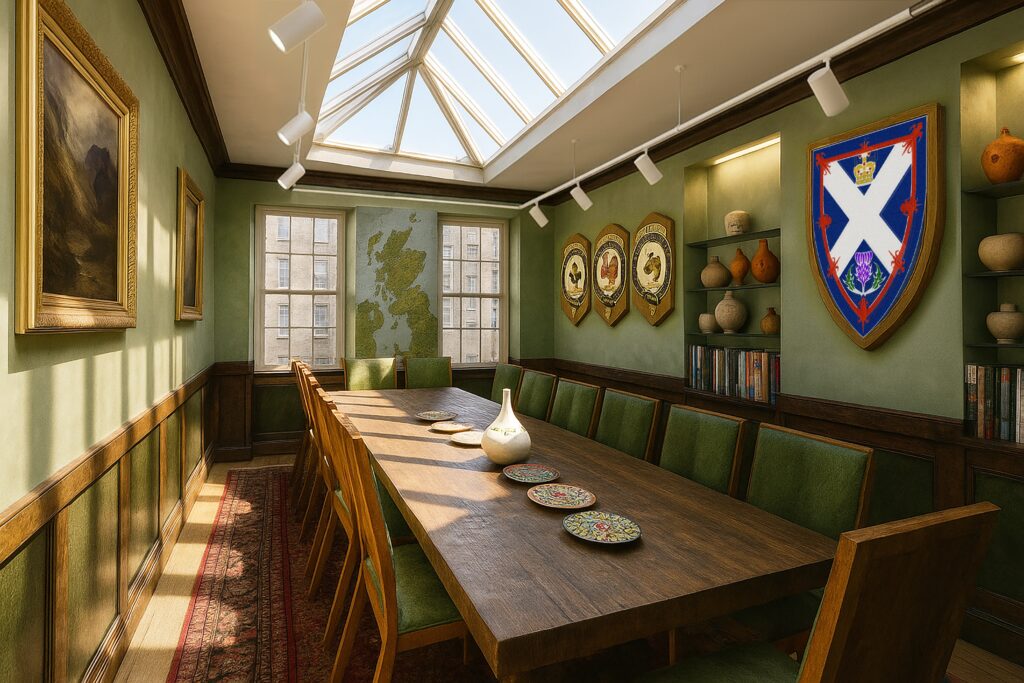Scotland’s Heritage Hub: A Gateway to Scotland’s Past
An update on the heritage hub project, as announced by the Society’s President at our St Andrew’s Day AGM on 29 November 2025:
For the past decade, the Society of Antiquaries of Scotland has been working towards a transformative vision: to create a new home for the Society and a national heritage hub for Scotland. We have identified an ideal location for this vision to be realised, the B-listed building in Bristo Place, immediately adjacent to the National Museum of Scotland. It is a truly exceptional and fitting location, steeped in its own remarkable history and reflecting our close relationship with the Museum throughout the centuries.
Our vision for the heritage hub is that it will be a home for the Society, and a Gateway to Scotland’s Past: a visible, welcoming national centre for research, learning, and engagement.
We envisage that it will provide:
- A Home for Fellows – Inspiring spaces for Fellows to meet, research, collaborate, and share knowledge through talks and access to archives.
- A Hub for Learning and Debate – Encouraging open discussion, diverse perspectives, and critical thinking about Scotland’s past and its relevance today.
- A Base for National Projects – Our nationally important heritage projects will have the anchor building they need to deliver additional benefits, including providing advocacy to safeguard Scotland’s heritage through the Society’s independent voice.
- A Connector for the Sector – Building partnerships and collaborations with heritage organisations, academic institutions, and cultural bodies to strengthen sector impact and reach.
- A Catalyst for the Sector – An affordable space in a prime position where heritage professionals, community heritage groups, volunteers, and researchers can host exhibitions and share experiences.
- A Centre of Innovation – Enhancing our digital presence and capabilities to reach a wider audience.
- A Portal for Public Discovery – Signposting visitors to Scotland’s heritage sites and introducing their stories. Supporting visitors in tracing their roots and understanding Scotland’s heraldic traditions.
- A Place to Support the Future – Fostering the education and professional growth of emerging heritage specialists.
Thanks to the generosity of the current owner, the Society has been given an exceptional opportunity to purchase this landmark property by January 2027 at a fixed price of £2.1 million.
Our first step was to apply to The National Lottery Heritage Fund (NHLF) for costs to redevelop the building and help move our vision forward. Our intention had always been to fundraise ourselves to buy the building and had hoped that this dual approach would be feasible. We heard in late September2025 that our initial application was not successful, however the feedback we received was extremely positive. The NHLF expressed strong interest in the project and recognised the heritage hub’s potential to transform the Society’s future and strengthen Scotland’s cultural infrastructure.
They encouraged us to reapply for funding once the building has been purchased, a clear signal that acquiring the property is the essential first step in unlocking wider support from the NHLF and other grant-giving sources.
At our Council meeting in October 2025, there was unanimous agreement that the combination of cost, location, and sustainability represents a unique, time-limited opportunity that must be seized. Council agreed to press ahead with urgency.
The Society of Antiquaries of Scotland now stands at a defining moment in its long and distinguished history. We are embarking on a major fundraising campaign that will secure a permanent home for the Society and shape its future for generations to come.
Our immediate goal is clear: to purchase the Bristo Place building by January 2027. The Society will commit up to £630,000 towards this once-in-a-lifetime opportunity and on Burns Night, 25 January 2026, we will launch a 12-month Capital Campaign to raise £1.5 million from major donors, philanthropists, and corporate partners. This will be a pivotal moment, and we warmly encourage Fellows to keep the evening free for our online launch. Further details will follow in a letter to Fellows in early January.
Once the building is secured, we will enter the second phase of our vision, a Development Campaign beginning in 2027 to restore and transform the Bristo Place building. This stage will unlock support from bodies like The National Lottery Heritage Fund and trusts and foundations, recognising the project’s societal impact and national value.
Today, we would like to invite all Fellows who feel inspired by this vision to stand with us. This will be a home for all of us and your support is critical to achieving success. We would welcome any expressions of moral support from you; and we will, of course, be asking for pledges and donations large and small throughout the campaign.
We encourage you to share this opportunity with your wider networks and help us build the momentum required for success.
At this crucial early stage, we are particularly seeking Fellows or other individuals who may be willing to make a significant pledge towards the purchase of the building and help lay the foundation for this historic transformation. We have a range of enduring recognition opportunities to honour the generosity of those who choose to lead the way, if they so wish, and we are willing to discuss other options with major donors
Early support will lay the foundations for the heritage hub and help bring our transformative vision to life.
Image Credits: Horizons Research and Benjamin Tindall Architects

If you are able to make a commitment, or you know someone who may be interested, please speak to our Head of Fundraising, Deborah Roe FSAScot, by calling 0131 247 4133 or emailing deborah@socantscot.org


